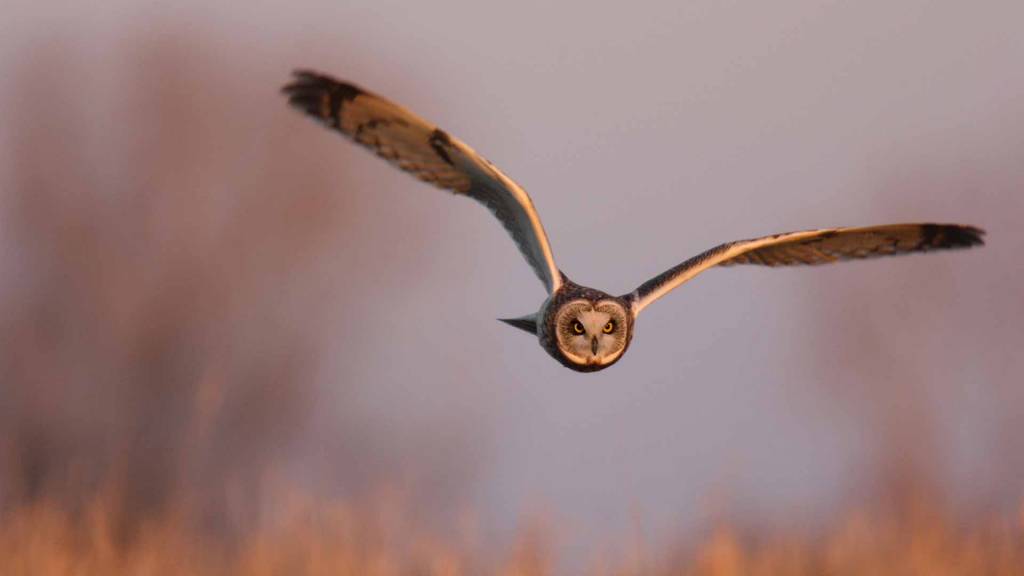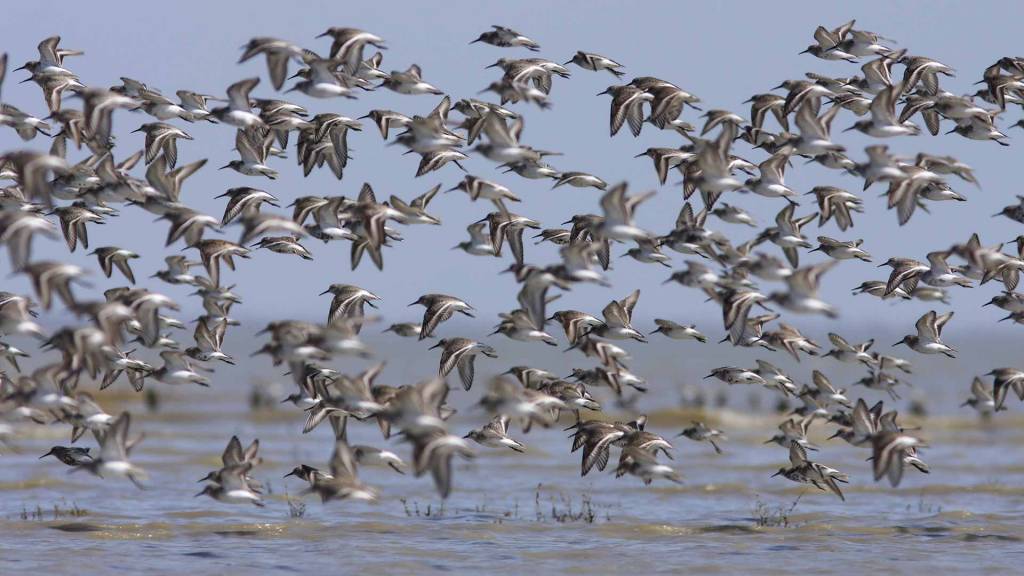05 March 2018
Whether you explore the Marais poitevin Regional Natural Park by boat, by bike or by foot, you couldn’t miss it: in every part of the paths, hamlets, beaches and canals, the nature dominates, and life is abundant in the Marais poitevin.
During one of your trips, you must have seen the elegant aerial ballet of birds or admired the authentic setting formed by the landscapes of the Marais poitevin.
For those who want to enjoy this, it’s a true natural opera that is played in the Marais poitevin.
Asio flammeus, The Short-eared owl
If you listen carefully at night in the Marais poitevin, perhaps you will hear the hoot of nocturnal raptors that go out chasing their preys after dark.
For the lucky ones, some of the owls appear during the day as well as at night, which gives you an opportunity to observe them. This is the case for the Short-eared owl, also called Asio Flammeus.

This raptor, that really looks like the more common long-eared owl, seeks refuge in the large open areas of the coast, in the western half of the Marais poitevin. We can find it in the vast wet meadows, the dikes and ditches near the large grasslands or the polders of the Aiguillon Bay. The Short-eared owl generally loves large open areas like the numerous ones in the Marais poitevin to nest.
You can have the privilege of seeing it during a trip, chasing small rodents during the day in winter. Contrary to the Long-eared owl, it has a lighter plumage, a striped breast and steeper wings. Its look is also a good indication: The Short-eared owl’s eyes are more vivid yellow than the Long-eared owl and are surrounded by a dark plumage, giving the owl an expressive piercing look.
DISCOVER AN EXCEPTIONAL NATURE IN THE MARAIS POITEVIN!
The Short-eared owl: an endangered species
Thanks to the richness of its environmental heritage, the Marais poitevin welcomes up to half the population of Short-eared owls. However, the Asio flammeus is listed as a vulnerable species on the red list of endangered birds since 2009, which makes it a protected species in France. The Marais poitevin Regional Natural Park must then follow those birds to protect them against the degradation of their habitat.
Observe the migratory birds in the Marais poitevin
Despite this, the wild areas of the Aiguillon Bay and the Marais poitevin are some of the main migratory and nesting places in Europe for birds, which find food and quietness. The importance of those sites for aquatic birds reflects the quality and the richness of this environment.

Ideally by bike or by foot, the Marais poitevin is the perfect place for those who want to observe migratory birds in their natural habitat, in the heart of the many landscapes of the Marais poitevin régional Nature Park. More than 330 bird species from the Marais poitevin can be seen throughout the year during the different migratory periods, giving you a perfect opportunity to discover the charms of the Marais poitevin and learn more about migratory birds, for you and for children!
Even if a visit in the Marais poitevin is the best thing to do, you can discover other faces of he Short-eared owl or consult the other natural treasures of the Marais Poitevin.
DON’T HESITATE TO READ OUR OTHER ARTICLES ON THE FAUNA AND THE FLORA OF THE MARAIS POITEVIN!












